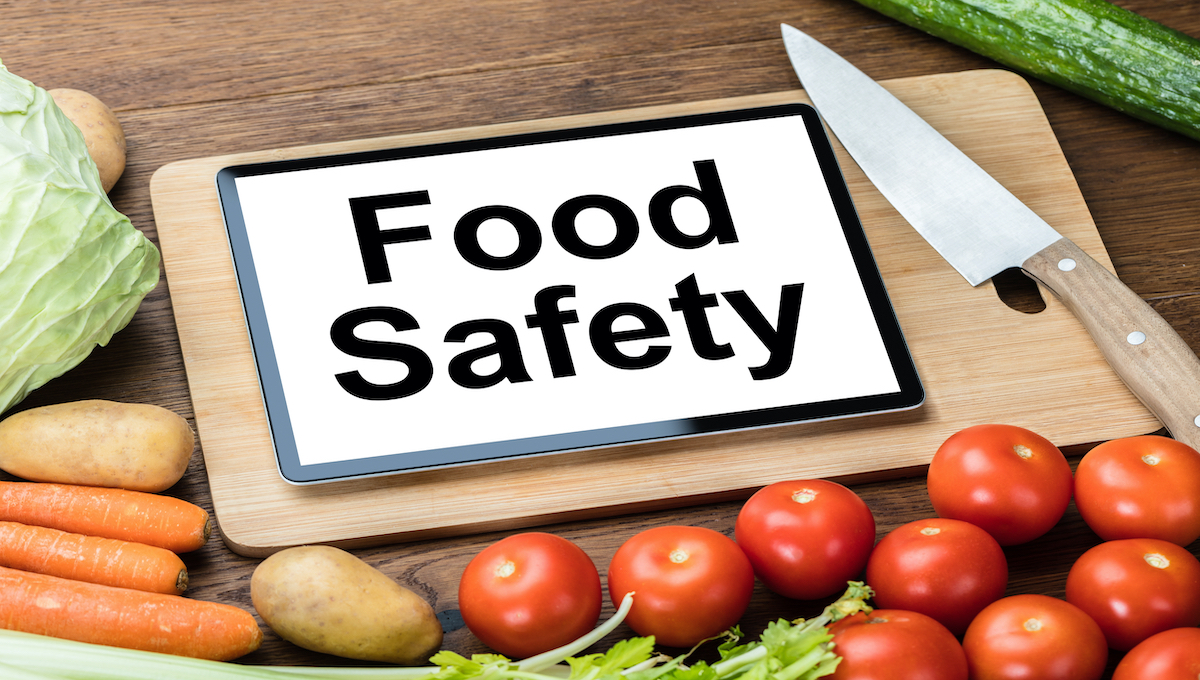Food is the basis of our energy, health, and well-being. We often take for granted that it is safe, but in an increasingly complex and interconnected world where food value chains are growing more complex, having strong standards and regulations is that much more important in keeping us safe.
Food safety is everybody’s concern, and it is difficult to find anyone who has not encountered an unpleasant moment of foodborne illness at least once in the past year. Foodborne illnesses may result from the consumption of food contaminated by microbial pathogens, toxic chemicals, or radioactive materials. While many foodborne diseases may be self-limiting, some can be very serious and even result in death.
With an estimated 600 million cases of foodborne illness each year (roughly one in 10 people worldwide), contaminated food is a threat to human health and economic security. Some groups of people, like pregnant women, young children, older adults, and people with weakened immune systems, are at much higher risk of developing foodborne illnesses.
So, it’s time for each one of us to follow these 5 simple measures to reduce the risk of foodborne illness.
- Keep Clean
When preparing and consuming food, it is essential to wash hands often especially after handling raw meat, poultry, eggs or seafood as dangerous microorganisms are widely found in soil, water, animals and people and can be carried on hands and transferred to food. A good washing protocol includes wetting hands, applying soap, rubbing hands vigorously together for 20 seconds, rinsing hands thoroughly under clean, running water, and drying hands completely using a clean disposable or cloth towel.
Washing is the most important method that consumers have, to reduce pathogen load on fresh produce that will not be either peeled or subsequently cooked. A good protocol for washing fresh fruits and vegetables includes: removing and discarding outer leaves, washing produce just before cooking or eating, washing under running potable water, scrubbing with a clean brush or with hands and drying the fruits or vegetables using a clean disposable or cloth towel. Free moisture on produce may promote the survival and growth of microbial populations.
Raw meat and poultry should not be washed because this creates the danger of cross-contamination to kitchen utensils, counter surfaces, or ready-to-eat foods, and is not necessary. - Raw and cooked should be separated
It is important to handle raw, cooked, and ready-to-eat foods while shopping, preparing or storing. This prevents cross-contamination from one food to another. Raw food can contain dangerous microorganisms which could contaminate cooked food through direct contact. This may reintroduce disease-causing bacteria into safe, cooked food. Also, refrigerator surfaces serve as a vehicle for contaminating other foods if not cleaned regularly.
- Food should be cooked properly
Uncooked and undercooked meat, poultry, eggs, and egg products are potentially unsafe. Raw meat, poultry, and eggs should always be cooked to a safer internal temperature. The best way to tell if they are cooked safely is to use a food thermometer to check the internal temperature. For safety and quality, allow the meat to rest for at least three minutes before carving or consuming.
Leftover refrigerated foods should also be reheated to the proper internal temperature. Bacteria grow most rapidly in the range of 40°F and 140°F. So, to keep out of this danger zone, keep cold food cold (40°F or colder) and hot food hot ( above 140°F). Proper cooking makes most uncooked foods safe, as they contain many microorganisms. For safety and quality, allow the meat to rest for at least three minutes before carving or consuming. - Foods should be kept at a safe temperature
Cooked food help at room temperature for several hours constitutes another major risk for foodborne illness. Check the temperature of your refrigerator and freezer with an appliance thermometer. The refrigerator should be at 40°F or below, and the freezer at 0°F or below. Always refrigerate perishable food within 2 hours - 1 hour when the temperature is above 90F and make sure it's wrapped securely to maintain quality and to prevent meat juices from getting onto other food. Also, refrigerator leftovers may become unsafe within 3 to 4 days. Microorganisms can multiply very quickly if food is stored at room temperature. So, make sure the food is stored and served at the right temperatures. - Use safe water and food
When in doubt, clean it out - this applies for everything you consume. Be a smart consumer, always opt for safer choices like bottled water and check the seal to ensure it has not been tampered with. When the water quality is doubtful, bring it to a vigorous boil - this will kill all dangerous microorganisms present. If that’s not possible use micropore filtering and disinfectant agents such as iodine tablets. Avoid fruits and vegetables with damaged skins because toxic chemicals are formed in damaged and moldy foods. Always prefer organic food and make sure to buy products from recognized and safe buyers.

copy2_1724444933_330124.png)
